 |
 |
 |
 |
 |
 |
 |
 |
 |
 |
|
KICP Workshops & Events
|
KICP Lectures, Talks, & Events, 2015 Physics colloquium: Marcela Carena, University of Chicago, "Particle Physics after the Higgs" January 15, 2015 | 4:00 PM | KPTC 106 The discovery of a Higgs Boson at the Large Hadron Collider (LHC) at CERN, marks the beginning of a new journey to understanding the quantum nature of the vacuum, and the origins of matter and dark matter in our universe. Scrutinizing the basic properties of the Higgs Boson and its possible close relatives may shed light into these and other mysteries. Coming LHC data could distinguish models in which the Higgs is a composite state from those advocating the existence of an enhanced symmetry of nature, called Supersymmetry. Future experiments will explore connections between the Higgs boson, dark matter, baryogenesis and neutrinos. Related Links: KICP Members: Marcela Carena Physics colloquium: John Carlstrom, University of Chicago, "Physics and Cosmology with the Cosmic Microwave Background" January 22, 2015 | 4:00 PM | KPTC 106 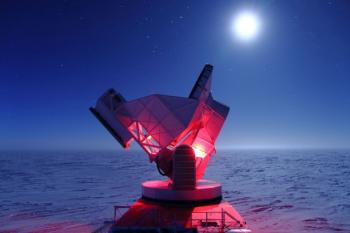 Related Links: KICP Members: John E. Carlstrom All Chicago Cosmology Colloquium: Alexander Szalay, Johns Hopkins University, "Baryon Acoustic Oscillations and Redshift Space Distortions" February 9, 2015 | 2:00 PM | room One West, Fermilab's Wilson Hall 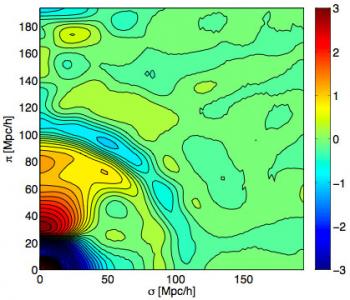 The Cabinet: Cosmos February 13, 2015 | 7:00 PM | Logan Center, Performance Penthouse (915 E 60th St) 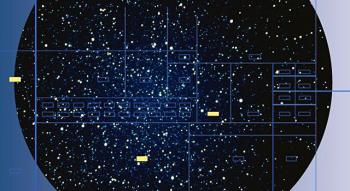 EVENING PROGRAM
Presenter & Performer Bios
Related Links: KICP Members: Angela V. Olinto Mark SubbaRao, Adler Planetarium, "The Future of the Planetarium" February 23, 2015 | 2:00 PM | Crerar Library, Kathleen A. Zar Room Website The first planetarium was developed over 90 years ago. Today thousands of planetaria exist all across the world. This talk will argue that the future of the planetarium is to make the transformation to a big data visualization facility. After reviewing the state of the art in planetarium visualization the talk will conclude with a invitation for University researchers to visualize their data sets at the Adler Planetarium. Speaker Biography: Mark SubbaRao is the Director of the Space Visualization Laboratory at the Adler Planetarium. He received his bachelors degree in engineering physics at Lehigh University and his Ph.D from Johns Hopkins University in astrophysics. His Ph.D thesis concerned the characterization and evolution of the luminosity function of galaxies. After obtaining his degree he worked as a post doctoral researcher at the University of Chicago on the Sloan Digital Sky Survey a project to make a 3D map of the Universe. He has led the development of major exhibition galleries at the Adler such as "The Universe: A Walk Through Time and Space" and has also produced, written and directed a number of stereoscopic videos and full-dome planetarium shows. These include the planetarium shows "Welcome to the Universe" and "Cosmic Wonder." His visualizations have been widely shown in print and television. He was part of a team that created a first-prize-winning visualization in the 2011 International Science and Engineering Visualization Challenge. He was also on a team that was awarded the best visualization at XCEDE 2013. Dr. SubbaRao chairs the international Planetarium Society's Task Force on Science and Data Visualization, which seeks to realize the potential of the planetarium as a scientific visualization tool. Read more >> Related Links: KICP Members: Mark Subbarao Broader Horizons: Stephen Hoover, Civis Analytics March 3, 2015 | 2:00 PM | TAAC 67  Related Links: KICP Students: Jennifer Helsby Astronomy Open House for Prospective Graduate Students March 6, 2015 | 9:00 AM | TAAC 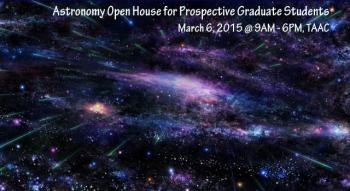
NSF's Google Hangout with KICP March 9, 2015 | 1:00 PM Website NSF-funded Physics Frontiers Centers are pushing the frontiers of science across the disciplines of physics. The Kavli Institute for Cosmological Physics (KICP) tackles the big questions in cosmology - dark matter, dark energy and how the Universe began. At 2 pm ET / 1 pm CT on Monday, March 9, the NSF Physics Division will host a live hour-long Google Hangout with KICP. We'll talk with the KICP Director and other members about the exciting science going on there including research on the cosmic microwave background and dark matter as well as the center itself and its innovative activities in graduate and postdoctoral education and programs that advance the broader understanding of science. You'll even be able to participate in the discussion using Twitter! No matter what your area of physics or the stage of your physics education or career, tune in to hear all about KICP and just what makes it a PFC.
Read more >> Related Links: KICP Members: Randall H. Landsberg; Tim Linden; Michael S. Turner; Abigail G. Vieregg Broader Horizons: Reid Sherman, "Career Phase Transition: Finding work in science policy" March 17, 2015 | 4:00 PM | LASR conference room 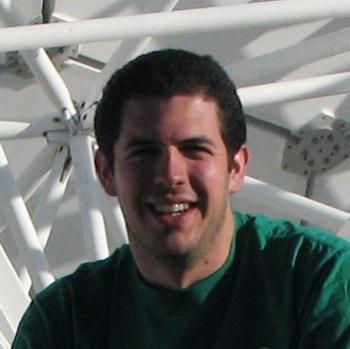 Related Links: KICP Students: Jennifer Helsby Broader Horizons: Krista Martocci, Software Engineer @ Gro Intelligence April 7, 2015 | 12:00 PM | TAAC 67 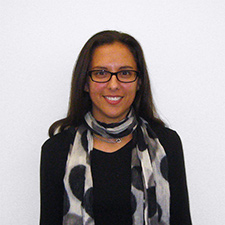 Related Links: KICP Students: Jennifer Helsby Harper Lecture: Edward W. "Rocky" Kolb, "Brave New Worlds" April 12, 2015 | 2:00 PM | Los Angeles, California Website UChicago's astronomers travel from Hyde Park to all continents of the world, as well as outer space, to explore the universe. In this lecture, Edward W. "Rocky" Kolb will describe the quest of UChicago astronomers to unlock the mysteries of the universe: dark matter, dark energy, and the possibility that we are not alone. Edward W. Kolb (usually known as Rocky) is the dean of the Division of the Physical Sciences and the Arthur Holly Compton Distinguished Service Professor in the Department of Astronomy and Astrophysics and the College at the University of Chicago. He is the founding head of the Theoretical Astrophysics Group, the founding director of the Particle Astrophysics Center at Fermi National Accelerator Laboratory, a fellow of the American Academy of Arts and Sciences and the American Physical Society, and the recipient of numerous teaching awards. Kolb's book The Early Universe, coauthored with Michael Turner, is the standard textbook on particle physics and cosmology. Read more >> Related Links: KICP Members: Edward W. Kolb Cosmosis Conversations: "The Artist and Scientist: Understanding Our Universe and Place Within featuring Jeremy Bolen & Juan Collar" April 16, 2015 | 4:15 PM | SAIC, Room #707 Website Join us for a panel conversation featuring COSMOSIS artist Jeremy Bolen and University of Chicago scientist-interlocutor Juan Collar, two dark matter mavericks, as they discuss their investigations of photographic process, particle acceleration, radiation, and all manner of cosmic particles. This intimate discussion will give the audience a chance to listen and ask questions about Jeremy and Juan's processes, allowing for greater access and understanding of the fields of art and science. Read more >> Related Links: KICP Members: Juan I. Collar Cosmosis Conversation: "The Artist and Scientist: Understanding Our Universe and Place Within featuring Sarah and Joseph Belknap + Jacob Bean" April 27, 2015 | 4:15 PM | School of the Art Institute of Chicago Website Join us for a conversation between COSMOSIS artist-duo Sarah and Joseph Belknap and exoplanet-expert Jacob Bean as they orbit topics relating to art, experimentation, and our existence within the environment of space. This intimate discussion will give the audience a chance to listen and ask questions about the Belkaps and Bean's processes, allowing for greater access and understanding of the fields of art and science. Read more >> Harper Lecture: Stephan Meyer, "Researching the Universe in Antarctica" May 7, 2015 | 6:00 PM | Toronto, Canada Website The South Pole Station is an important observatory for astrophysics and cosmology research, but because of the extreme conditions and remoteness of the site, designing, constructing, and operating its research tools is a challenge and an adventure. Several telescopes operate throughout the night - which lasts six months in Antarctica - gathering information on cosmic microwave background radiation and distant clusters of galaxies to explore how the universe as we know it evolved. Stephan Meyer, LAB'70, a member of the South Pole Telescope team, will talk about the science being investigated with these telescopes and the excitement of carrying out research on the Antarctic continent. Meyer is a professor in the Departments of Astronomy & Astrophysics and Physics, the Enrico Fermi Institute, and the College. He was a postdoctoral associate and then assistant professor of physics at MIT before joining the University of Chicago faculty in 1993. Read more >> Related Links: KICP Members: Stephan S. Meyer SWIP/KICP Pizza with Professors May 19, 2015 | 6:30 PM | GCIS Atrium 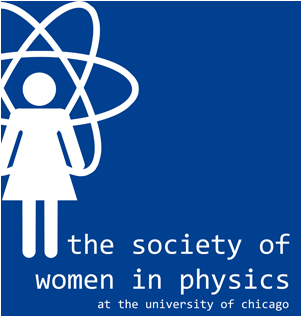 All Chicago Cosmology Colloquium: Carlos Frenk, Durham University, "The vicissitudes of the cold dark matter model of cosmology" May 26, 2015 | 2:00 PM | Fermilab, Wison Hall - One West  World Science Festival Live Stream viewing and discussion: "To Infinity and Beyond: The Accelerating Universe" May 28, 2015 | 7:00 PM | Hutch Commons 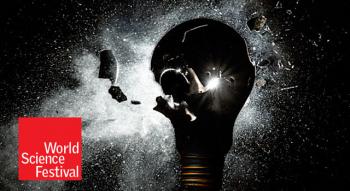 7PM (CDT) Bring food, friends and questions to Hutch Commons for a Live Stream viewing and discussion of "TO INFINITY AND BEYOND: THE ACCELERATING UNIVERSE" with professors Michael S. Turner, John E. Carlstrom and Michael Gladders of the Kavli Institute for Cosmological Physics (KICP). Explore modern cosmology's biggest mystery with UofC Professor Josh Frieman, Priyamvada Natarajan, Adam Riess (2011 Noble Laureate), Jan Tauber, and Neil Turok with Lawrence Krauss moderating. How to WATCH live stream: Click Here to watch live stream (7-8:30PM Central Time Thursday May 28) How YOU can ask cosmic questions: (1) Ask the faculty and other researchers in Hutch Commons! (2) Send questions to the WSF in NYC before and during the event by emailing wsflive  worldsciencefestival.com worldsciencefestival.com or via Twitter using the #WSFLive hashtag. note - The WSF Twitter account will be tweeting questions relating to "Infinity and Beyond" before, during, and after the live-screened event. It's modern cosmology's biggest mystery -- an unexplained energy that could one day rip the universe apart. It's called dark energy, an anti-gravitational force that confounds the conventional laws of physics. It's the most dominant substance in the universe, making up more than two-thirds of the cosmos. And yet, nearly two decades after its discovery, science is still grappling to explain what dark energy actually is. With today's top physicists as our guides, we'll journey to the earliest moments of the universe -- and then far into the future -- searching for answers. MODERATOR Lawrence Krauss Lawrence Krauss is an internationally known theoretical physicist and best-selling author. His research focuses on the intersection of cosmology and elementary particle physics. Krausss work addresses questions about the origin of matter in the universe, Einstein's theory of general relativity, astrophysics, the future of the universe, and the properties and description of the dark energy that is thought to account for most of the universe's present energy content. A fervent advocate for science literacy, Lawrence Krauss has written nine books for a general audience, including the bestseller The Physics of Star Trek, and most recently A Universe from Nothing. He was recently awarded the National Science Board's Public Service Award for his contributions to public understanding of science. Krauss is foundation professor in the School of Earth and Space Exploration and director of the ASU Origins Project at Arizona State University. PARTICIPANTS
Related Links: KICP Members: John E. Carlstrom; Joshua A. Frieman; Michael D. Gladders; Jason Henning; Elise Jennings; Richard Kessler; Randall H. Landsberg; Michael S. Turner World Science Festival Salon: "Dark Energy: Measuring a Mystery" May 29, 2015 | 4:30 PM | NYU Global Center, Grand Hall Website 4:30PM (CDT) MODERATOR: Mario Livio PARTICIPANTS: Josh Frieman, Priyamvada Natarajan, Adam Riess Dark energy may be the most compelling problem in modern cosmology. An unexplained substance, it's believed to be the driving force behind cosmic acceleration. And yet there is no consensus on what dark energy actually is. The answer could have profound implications for our understanding of the fundamental laws of physics. This discussion focuses on three cutting-edge studies of dark energy, each using radically different techniques. Adam Riess, winner of the 2011 Nobel Prize for the discovery of dark energy, will share a new technique to more accurately measure the expansion rate of the universe. Priya Natarajan of Yale will explain how dark matter can be used to explore dark energy. And Dark Energy Survey director Joshua Frieman will deliver the very latest from his five-year study. The World Science Festival's annual salon series offers in-depth conversations with leading scientists, extending the discussion of the Festival's premier public programs to graduate students, postdocs, faculty, and well-informed members of the general public. MODERATOR Mario Livio, Astrophysicist, Author Mario Livio is an internationally known astrophysicist at the Space Telescope Science Institute, which conducts the scientific program of the Hubble Space Telescope and will conduct the scientific program of the upcoming James Webb Space Telescope. He is a fellow of the American Association for the Advancement of Science. He has published more than 400 scientific papers on topics ranging from dark energy and cosmology to black holes and extrasolar planets. Livio is the author of five popular science books, including The Golden Ratio (for which he received the Peano Prize and the International Pythagoras Prize) and Is God a Mathematician? Livio's recent book, Brilliant Blunders, was on the New York Times Best Sellers list and was selected by the Washington Post as one of the "2013 Best Books of the Year." PARTICIPANTS Josh Frieman, Cosmologist Josh Frieman is a senior staff scientist at the Fermi National Accelerator Laboratory and Professor of Astronomy & Astrophysics. He's also a member of the Kavli Institute for Cosmological Physics at the University of Chicago. Frieman's research focuses on cosmology, including the study of dark energy and dark matter, the large-scale structure of the Universe, supernovae, and gravitational lensing. Frieman is a fellow of the American Physical Society and of the American Association for the Advancement of Science and an honorary fellow of the Royal Astronomical Society. Currently, he serves as director of the Dark Energy Survey, an international collaboration of 300 scientists carrying out a five-year survey of 300 million galaxies using a camera they built for a four-meter telescope in Chile, to explore why the universe is speeding up. Josh Frieman received his B.S. in physics from Stanford University and his Ph.D. in physics from the University of Chicago. Priyamvada Natarajan, Cosmologist, Theoretical Astrophysicist Priyamvada Natarajan is a professor in the Departments of Astronomy and Physics at Yale University. Natarajan's research is focused on exotica in the universe - dark matter, dark energy, and black holes. She is noted for her key contributions to two of the most challenging problems in cosmology: mapping the distribution of dark matter and tracing the growth history of black holes. Her work using gravitational lensing has provided a deeper understanding of the granularity of dark matter in clusters of galaxies and offers a novel way to unravel the nature of dark matter. She also works on the assembly and accretion history of black holes. Deeply invested in the public dissemination of science and a fervent proponent of numerical literacy, she is also a published poet. Along with her academic position at Yale, Natarajan holds the Sophie and Tycho Brahe Professorship at the Dark Center, Niels Bohr Institute in Copenhagen, Denmark. Adam Riess, Astrophysicist Adam Riess is the Thomas J. Barber Professor in Space Studies at the Johns Hopkins University Krieger School of Arts and Sciences, a distinguished astronomer at the Space Telescope Science Institute, and a member of the National Academy of Sciences. He received his bachelor's degree in physics from MIT and his Ph.D. from Harvard University. Currently, he leads the SHOES Team in efforts to improve the measurement of the Hubble Constant, and the Higher-Z Team to probe the origin of cosmic acceleration by measuring distant Type Ia supernovae. In 2011, he was named a co-winner of the Nobel Prize in Physics and was awarded the Albert Einstein Medal for his leadership in the discovery that the expansion rate of the universe is accelerating, a phenomenon widely attributed to a mysterious, unexplained "dark energy" filling the universe. His accomplishments have been recognized with numerous other awards, including a MacArthur Fellowship in 2008. Read more >> Related Links: KICP Members: Joshua A. Frieman Chicago Science Fest: The Mysteries of Dark Matter, Dark Energy, and the Accelerating Universe May 30, 2015 | 10:30 AM | 222 W. Merchandise Mart Plaza, 12th Floor, Chicago, IL Website Everyone knows there are things we can't see - the air we breathe, for example, or to be more exotic, a black hole. But what you may not know is that what we can see - a tree, a building or our planet - makes up only 5% of the Universe. The other 95% is totally invisible to us and its presence is discernible only by the weak effects it has on visible matter around it. This invisible stuff comes in two varieties - dark matter and dark energy. One holds the Universe together, while the other tears it apart. (In 1998 was the astonishing revelation that the Universe is not only expanding, but doing so at an ever-quickening pace.) What these forces really are has been a mystery for as long as anyone has suspected they were there, but the latest discoveries of experimental physics have brought us closer to that knowledge. Particle physicist Dan Hooper and cosmologist Elise Jennings will explain some of the toughest ideas science has to offer and how they are working to discover what makes up our dark cosmos. Particle physics explores the fundamental nature of energy and matter, while cosmology is the science of the universe itself, including its composition, history and evolution. Elise Jennings is a research associate in the astrophysics theory group at Fermi National Laboratory and an associate fellow at the Kavli Institute for Cosmological Research at the University of Chicago. She is a computational cosmologist and interested in large scale structure measurements which can constrain dark energy and modified gravity models. In particular she has worked on simulations that allow us to determine the expansion history and growth rate of structure in the universe, which are important ways to test the standard model of cosmology. Dan Hooper is an Associate Scientist in the Theoretical Astrophysics Group at the Fermi National Accelerator Laboratory, and an Assistant Professor in the Department of Astronomy and Astrophysics at the University of Chicago. Previously, he was the David Schramm Fellow at Fermilab, and a postdoc at the University of Oxford. In 2003, he completed his Ph.D in physics at the University of Wisconsin. Dan's research focuses on the interface between particle physics and cosmology. He is especially interested in questions about dark matter, supersymmetry, neutrinos, extra dimensions and cosmic rays. Read more >> Related Links: KICP Members: Daniel Hooper; Elise Jennings 81st Compton Lectures: Andrew McCann, "Nature's Timepiece: The Exotic World of Pulsars" May 30, 2015 | 11:00 AM | KPTC 106  Neutron stars are born in the final moments of the supernova death of massive stars and, in keeping with their exotic origin, they exhibit unmatched extremes in a variety of ways. Not only are they the smallest stars we know of, neutron stars are the most dense solid objects in the known Universe. Their surface gravity is 100 billion times that of the Earth and their magnetic fields' strengths, which can reach 1015 Gauss, are the strongest known to exist. Neutron stars are born rotating rapidly and their emission, like the beam from a lighthouse, is observed as a highly stable and regular periodic pulsation - hence the name 'pulsating star' or 'pulsar'. Although pulsars were discovered over 40 years ago and the number of known pulsars exceeds 2400, the physical processes which power the vast array of unique and often bizarre phenomena observed from pulsars are poorly understood. Explaining the observed behaviour of neutron stars has become one of the most challenging puzzles in high-energy astrophysics. Despite the longstanding mystery of their emission, the steady and predictable pulsations from pulsars make them remarkably powerful astrophysical tools. This duality has put pulsars at the centre of some of the most compelling astrophysical research of the last few decades. Each week we will explore different aspects of this duality, by reviewing pulsar phenomena in different wave bands (radio, optical, x-ray, gamma-ray) and by discussing the role of pulsars in tests of Einstein's theory of relativity and in the search for gravitational waves. No scientific background is required -- just bring your curiosity. Related Links: KICP Members: Andrew McCann Adler Brown Bag Lunch Seminar: Daniel Grin, "Astrophysics to older adults" June 16, 2015 | 12:00 PM | Adler Planetarium I will discuss a new program (based at the Kavli Institute for Cosmological Physics, University of Chicago) designed to bring astrophysics and broader science content to older adults throughout Chicago. I'll start by highlighting the motivation for life-long learning in general but for senior citizens in particular. I'll then discuss the program we have created at a variety of senior centers and residential communities throughout the Chicago, including presentations by researchers from the University of Chicago, as well as the capstone trip made by senior groups to the Adler planetarium at the end of the program. As I conclude, I will try to touch on outcomes and future avenues for growth of the program. Related Links: KICP Members: Daniel Grin Computations in Science Seminar: Marilena Loverde, University of Chicago, "Cosmic Structure As a Probe of the History of the Universe" June 17, 2015 | 12:15 PM | KPTC 206 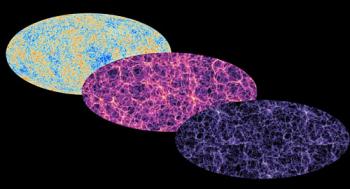 Related Links: KICP Members: Marilena LoVerde WorldWide Telescope: A Professional and Public Visualization Tool July 28, 2015 | 12:00 PM | LASR conference room Visualization of data is a core aspect of most astrophysical research. WorldWide Telescope (WWT) was developed by Microsoft Research to enable rich contextual visual explorations and presentations. As a tool, WWT can be used in research to view datasets in the context of wider spatial scales and comparisons to image and catalog data at various wavelengths as well as a portal to journal articles. It has been used to create video abstracts to complement papers published in ApJ Letters and to generate videos to be used in professional talks. It also provides a way to interact with figures in context in journal articles. Videos and tours can be created to communicate basic or contemporary research to public audiences. WorldWide Telescope can be used to support K-12 as well as undergraduate education in instruction and student projects. What makes this even more exiting is that WWT is now an open source project available in GitHub under the .NET Foundation. The American Astronomical Society (AAS) is helping to put together community-based support for this project. At this lunch talk, you will learn about how you can use WWT in your own research and communication to colleagues and the public. WWT team members Doug Roberts (Northwestern, AAS), Mark SubbaRao (Adler, UofC), and the principal developer Jonathan Fay (Microsoft) will present this talk and take questions about WWT as a tool, its new life under open source development and future roadmap. Related Links: KICP Members: Randall H. Landsberg; Mark Subbarao KICP at the Council for Opportunity in Education conference September 18, 2015 | Atlanta, GA Website This year's conference, "Renewing the American Promise of 1965," features thought-provoking and practical sessions to address the importance of and potential for educational opportunity. September 18, 2015 in Atlanta, GA "S.T.E.M. Partnership in Process: Collaborating Across Organizations Identifying Science, Technology, Engineering and Math Resources to Support TRIO Programs" Joy Brittain, Ed.D. Director Early Outreach Support Programs California State Univ. Dovetta McKee, J.D. Director Office of Special Programs University of Chicago Randall H. Landsberg Director Education & Outreach Kavli Institute for Cosmological Physics University of Chicago Read more >> Related Links: KICP Members: Randall H. Landsberg Sexual Harassment discussion October 16, 2015 | 2:00 PM | ERC 401 Dear Colleagues in the Department of Astronomy & Astrophysics, As you probably learned over the last few days, Geoff Marcy of the University of California at Berkeley (UCB) has admitted to unacceptable behavior involving women in his field over a number of years. His admission followed sexual harassment complaints by the women concerned and a university investigation. The University of Chicago does not tolerate sexual harassment - it has no place in research or in any other workplace. Our policy can be found here: http://sexualharassment.uchicago.edu. To help us with this very serious issue, I have invited Ingrid E. Gould, Associate Provost for Faculty and Student Affairs and Sarah Wake, Affirmative Action Officer to join all of us in the Department for an important discussion about this topic. PLEASE join us for a conversation with Ingrid and Sarah on Friday the 16th at 2pm in ERC 401. Angela V. Olinto, Homer J. Livingston Professor and Chair Department of Astronomy & Astrophysics Related Links: KICP Members: Angela V. Olinto Discussion on the Mid-Decadal review, "New Worlds, New Horizons in Astronomy and Astrophysics" October 21, 2015 | 12:00 PM | ERC 401 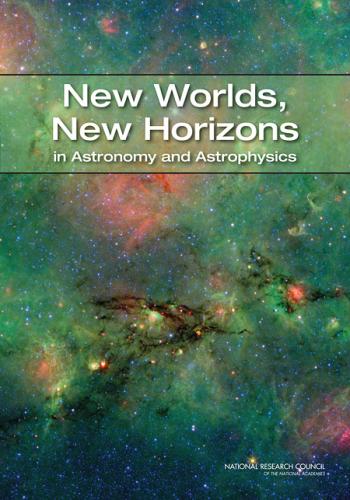 Please bring your lunch to an open discussion on the Mid-Decadal review this Wednesday October 21 at noon in ERC 401. The National Research Council was asked by NASA, NSF, and DoE, to review these agencies' responses to the 2010 NRC decadal survey, "New Worlds, New Horizons in Astronomy and Astrophysics" (NWNH). I am in this review committee and would be interested in hearing your view on the progress towards the NWNH vision or any other views you may want to share. Michael Turner kindly agreed to review the NWNH recommendations for us, John Carlstrom agreed to update us on the WFIRST NRC report and Josh Frieman to update us on the EUCLID participation of the US. If you have an interest on the future of space missions for the science we are most involved in, please bring your ideas. In the future we would also like to discuss the OIR system report, the P5 report, and the Portfolio Review and their effect on our science. Angela V. Olinto, Homer J. Livingston Professor and Chair Department of Astronomy & Astrophysics Related Links: KICP Members: John E. Carlstrom; Joshua A. Frieman; Angela V. Olinto; Michael S. Turner Michael S. Turner, "The Realm of Mystery" October 24, 2015 | 2:30 PM | The Helix Center Michael S. Turner, Bruce V. and Diana M. Rauner Distinguished Service Professor of Physics, the University of Chicago WebsiteDonald Rumsfeld famously said, "There are known knowns; there are things we know we know. We also know there are known unknowns; that is to say we know there are some things we do not know. But there are also unknown unknowns - the ones we don't know we don't know." From a philosophical perspective, how do we know what we don’t know? How do we go about transforming "known unknowns" into "known knowns" and "unknown unknowns" into "known unknowns"? Is one person's unknown another person's cognitive bias? How might a psychoanalytic understanding of dynamic mental function play a role here? And what role does mystery play in our lives, from scientific, religious, and other perspectives? Participants
Read more >> Related Links: KICP Members: Michael S. Turner AstroChicago 123 November 17 - 18, 2015 | Chicago, IL Website | Photo Gallery The Department of Astronomy and Astrophysics is celebrating its 123rd anniversary together with the 125th anniversary of the founding of the University of Chicago. The Department is also celebrating its new home, the William Eckhardt Research Center, a state-of-the-art research building that will house all members of the Department after more than 50 years of being located in several sites. Faculty, researchers, students, staff, alumni, and friends of the Department are cordially invited to the celebration. On November 17th and 18th, faculty, researchers, students, staff, alumni, and friends of the Department will gather in the William Eckhardt Research Center for an event that will showcase the Department's history, latest scientific achievements, and vision for the future of Astronomy and Astrophysics. The two-day event will feature talks, panels, and a film to celebrate and explore our rich heritage and our bold aspirations for future research in Astronomy and Astrophysics, including: the origin and evolution of the Universe; the search for Earth twins; the most extreme phenomena in the Universe; state-of-the art computing and observing tools; future technologies needed to advance our knowledge; and advances in graduate and undergraduate teaching and public outreach of Astronomy and Astrophysics. Read more >> Related Links: KICP Members: Angela V. Olinto |


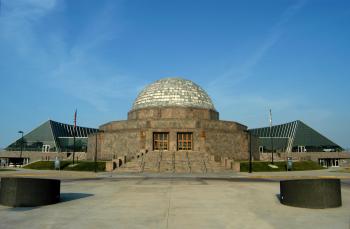
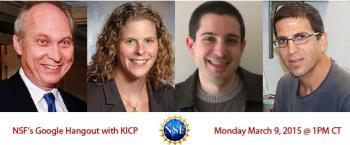

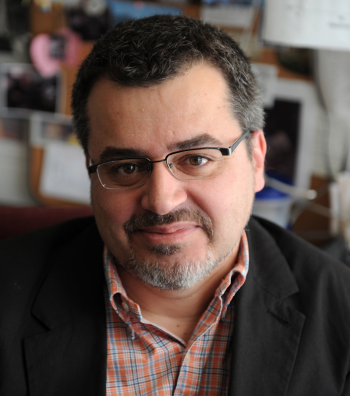
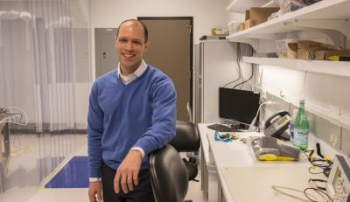
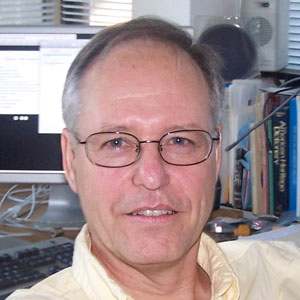

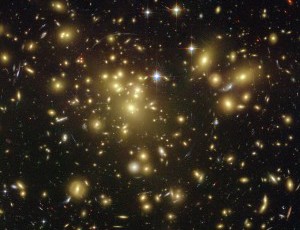
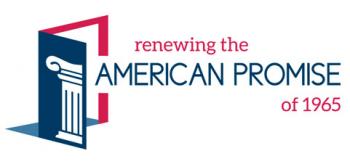
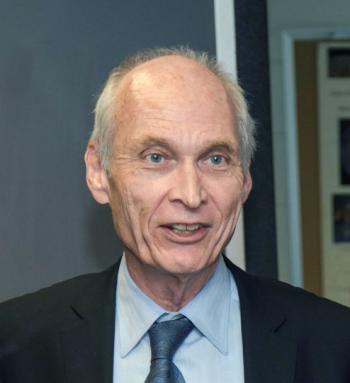
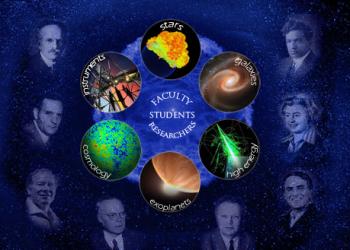



 Overview
Overview